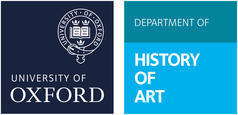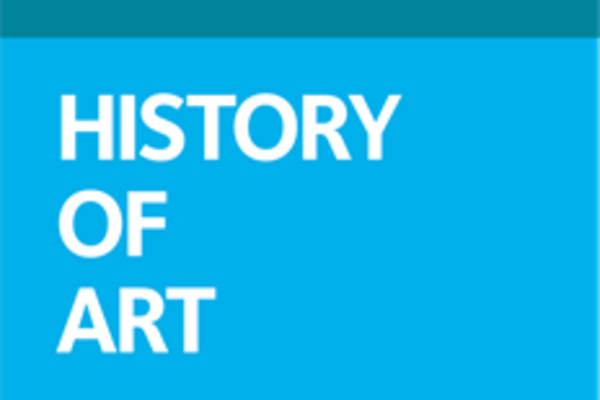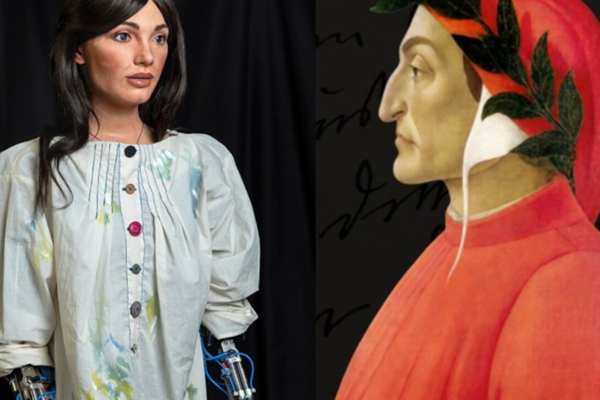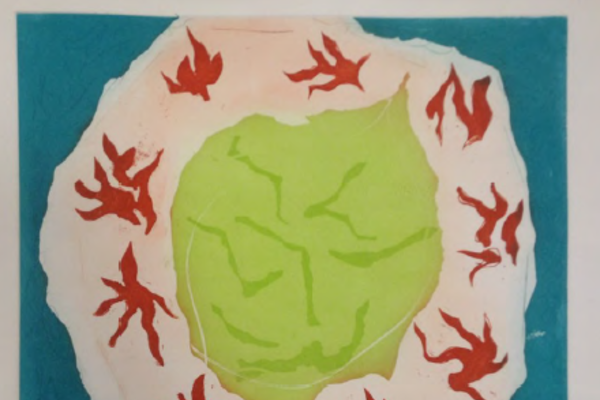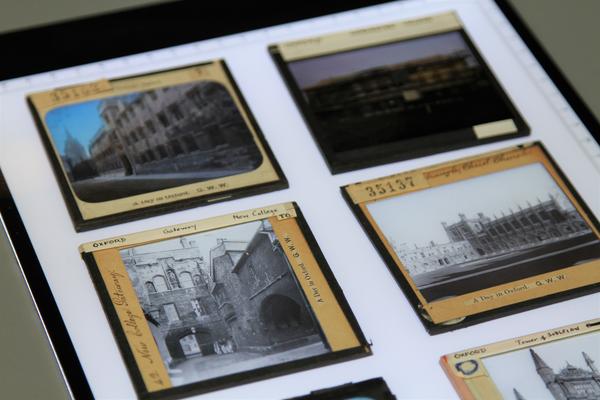Alumni
Please check this page regularly for updates and email us if you have any items that you feel could be usefully posted here or added to our newsletter. We very much value our continued contact with our students when they finish their formal association with the Department. Changes in legislation mean we require you to confirm that you are happy to receive communications from us, so do please update your details so we can continue to keep in touch.
Please note: if you do not complete this form you will be removed from our alumni network.
Latest Alumni Newsletter
December 2021
December 2020
December 2019
April 2019
Alumni Profiles
For me the highlight was my thesis; getting to spend a dedicated amount of time focusing on an area of interest and really honing my arguments and analysis. We presented our theses to a group of Art Historians at the end of the process which was really satisfying, especially as it allowed me talk about the wider context of my area and include some items that I couldn’t fit in the word count!
I am a company secretarial assistant for Eversheds LLP. I am studying for my Chartered Secretary exams currently. The role title always confuses people and whilst there is a fair bit of administration involved, I focus on ensuring my clients are compliant with the statutory and legal obligations of UK corporate law. I also provide board support which involves meeting with the boards of companies, minuting their meetings and ensuring they are abiding by the best standards of corporate governance. I fell into the role really, which seems to be par for the course for company secretaries. I went to work for the Co-operative Bank on the business management graduate scheme which helped me define what I enjoyed and wanted from a job. I then saw a role in the Co-operative Group Secretariat which I joined just before the well-publicised crises which hit the Bank and the Group so it was certainly a baptism of fire.
How did and do the skills you acquired when studying History of Art support you in your work today?
We get some fairly obscure queries about corporate law so the research and critical analysis skills I developed come very much into use, as does the ability to speed read! Being able to really draw out the crux of the matter and define the boundaries of the question being asked is a direct result of the teaching at Oxford. I find this a crucial skill when working in the law industry. When I first came to study History of Art at Oxford, I hadn’t studied it previously and hence discovered a whole new world of academic thought and approach. Being able to work in that environment and complete essays on Plato one week to Seurat the next has given me a confidence when approaching new topics. Recent changes in UK law have changed the requirements for companies and I led the department’s response to that, publishing website articles and liaising with clients about it which I think stemmed directly from my time at university. I also write minutes for board meetings which can be up to 6 hours long. Writing essays for discerning academics with an expertise in the essay topic has given me the skill to identify the key items for recording and précis the events of the meeting whilst provided a good representation of the topics discussed.
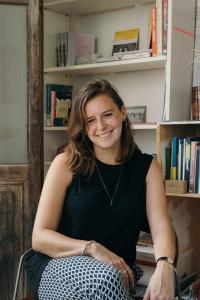
What was the highlight of your Art History studies?
I still vividly remember something Gervase Rosser told the audience at the departmental open day the year I applied. He said, ‘if it’s visual and it’s interesting, we’ll study it’. This receptiveness to all facets of visual culture, and contexts outside of Western canons of art history, was very exciting to me. I worked on research for my first-year object essay with the late art historian Michael Sullivan, an expert of Chinese art, as I studied a piece in his collection. I was 19, he was 92, and extremely generous with his time and knowledge. Such a formative opportunity only the art history department could have given me.
What is your job/position/occupation today and how did you get there?
Today I am an independent curator and writer based in Beirut, Lebanon. After graduating I was the Von Clemm Postgraduate Fellow at Harvard University, where I specialised in art from the Middle-East, before settling in Lebanon in 2013. Over the last few years my curatorial and written work has pursued my interests in Arabic science fiction, alternative arts pedagogy in the Middle-East and the changing art institutional landscape of Lebanon. I am currently curator of At the Seams, the Palestinian Museum’s first satellite exhibition outside of the West Bank, and author of the book of the same name, on the political history of Palestinian embroidery. This year I am working on projects for the Transart Triennale 2016, Beirut Art Center and Dar el-Nimer – on subjects as diverse as sci-fi, textiles and Arabic calligraphy – and am attending curatorial workshops of the Berlin Biennale and Gwangju Biennial.
How did and do the skills you acquired when studying History of Art support you in your work today?
As an independent curator I am privileged to work both on museum-commissioned exhibitions that require in-depth art historical research, as well as on self-directed curatorial projects which call for creative thinking. While working on an exhibition relating to textiles, I find myself drawing on the material culture and anthropological aspects of my studies at Oxford; when approaching contemporary artistic practice, I return to the grounding the department gave me in histories of exhibition-making, art criticism and Modernism. It is this breadth of study, and the strength of critical thought it instilled in me, that I value most today. The course both challenged me and gave me confidence. It was rigorous, but also required we take risks. It placed emphasis on self-led research in every year of the degree – building skills I have used ever since – as well as on writing, elastic thought, and the articulation of argument. Beyond these skills, the relationships I have maintained with fellow students, younger and older, as well as the tutors and staff, remain extremely important to me. The History of Art department always felt like family; it still does.
What was the highlight of your Art History studies?
Spending time with inspiring people - both tutors and fellow students, seeing and studying beautiful things and having wide ranging discussions about visual culture and the arts.
What is your job/position/occupation today and how did you get there?
Policy and research manager for the Creative Industries Federation. I joined the Creative Industries Federation 2 years ago - before it was launched - so in many ways I got lucky. I had been working at Waddesdon Manor for a year on a exhibition of Roubiliac sculptures, which taught me research and project management skills that would prove invaluable. But I had to teach myself some of the stuff I needed - economics for example - and I spent a lot of my spare time in the first year reading hundreds of reports from the last 20 years to truly understand the political backdrop to the sector.
How did and do the skills you acquired when studying History of Art support you in your work today?
Alongside an ability to articulate my passion for art, the most valuable thing that the course gave me was confidence in conversation. Tutorials force you to verbally commit to your ideas and to argue your side, which is something that you need if you work in policy. The broad philosophical nature of the course in Oxford has also proved surprisingly useful. You never know when an MP will ask you - 'but what is the point of art' - and it is good to be able to answer that on a couple of levels. Although the way I write is quite different to traditional academic writing, the tutors were also supportive of my individual style, which I am very grateful for.
What was the highlight of your Art History studies?
I loved my Special Subject Politics, Art and Culture in the Italian Renaissance. I found discovering and discussing the extensive range of source material with tutors and fellow students exciting and thought provoking. Learning to analyse and think creatively about the possible links between poems, political treatises and contracts whilst at the same time keeping a critical eye on artworks – opened up for me a much broader view of material culture which I value enormously to this day.
What is your job/position/occupation today and how did you get there?
I developed a passion for teaching in 2012 when I started working with students in Italy for Art History Abroad (AHA). I am now their Director of Studies; I spend on average three months a year teaching abroad and I organise and manage AHA’s student courses and syllabus. Over the last three years I have been really proud to develop and teach workshops and courses with The Bigger Picture as their Creative Associate. TBP was founded on the premise that art can be an invaluable catalyst for learning across all subjects and among students of all abilities – finding ways to expand our work with schools across the country will be the next great challenge for me.
How did and do the skills you acquired when studying History of Art support you in your work today?
As a freelance educator I draw continuously from the extraordinary breath of knowledge and reference that I gained throughout my undergraduate degree. At the same time, the methodological dexterity that our tutors taught us – is still fundamental in my approach to artworks and material culture. I cannot imagine teaching so many different types of students so many different types of lessons without having been afforded these formative skills. Learning to look critically and think creatively – are skills which I use both in work and everyday life.
What was the highlight of your Art History studies?
My third-year thesis was probably the highlight of my studies. It's really rewarding to spend a full term focusing in on an academic niche. My thesis was on Tate Modern and how cultural institutions document and memorialise transient artworks, such as Olafur Eliasson's awe-inspiring The Weather Project (2003). I'd been visiting Tate since childhood, but as a hyperactive six year old, had not really engaged with it with the level of academic scrutiny that I was afforded by my thesis. I think many testimonies about the thesis would sound similar; students choosing topics of personal, long-standing interest to them that they are able to explore from a totally new angle.
What is your job/position/occupation today and how did you get there?
I am a freelance director and editor of films, making commercials, music videos, shorts and a feature. At Oxford, I did filmmaking in my spare time with other students from my year-group. I continued with it after graduating and tried to find clients for my work, which was pretty tough in the first six months and involved a lot of living at home, eating my parents' bread. However, once I'd made one film that I was really proud of, it became a calling card that I could use for better work. My filmmaking network grew and after a year I had gained editing representation from Soho Editors and edited my first feature film, Chubby Funny. Last month, I was signed by Silverfish Media for directing. I have worked for clients including Channel 4, Adidas, Umbro, Morrisons, Capitol Records, Hewlett Packard and others, but I'm now trying to move away from commercials and towards drama directing.
How did and do the skills you acquired when studying History of Art support you in your work today?
History of Art encourages you to think creatively and that was a real breath of fresh air after finishing A-Levels, where your brain is straight-jacketed into a fairly formulaic, mark-scheme oriented mode of thinking. All of the tutors had really original ways of looking at visual culture and encouraged the same in their students. That's been really useful in terms of creative thinking with filmmaking, where the challenge is to create a visual piece that is novel, surprising and engaging. The fact that the course can also be quite niche and in-depth has also come in handy, particularly when trying to create fancy mood boards for music videos and short films. I was at a colour grading house the other day and the colourist told me, wearily, that he rarely received a mood-board that didn't have a Caravaggio on it. However, he'd never heard of Xu Beihong and was duly impressed when I gave him one of the Chinese masters's ink paintings as a visual reference (thanks Craig!!).

